Mistwalker
Gold Member
- Joined
- Dec 22, 2007
- Messages
- 18,962
When I picked up this Reiff F4 back in October, I looked for a review here but didn't see one. So I bought it based on a few things I was eeing with my own eyes and hoped for good results in use over time.
Overall it is 9 inches, with a 4 inch blade made of 5/32 CPM 3V steel with a high saber grind, and has 3 dimensionally contoured G10 handle scales, and comes with a really solid kydex sheath.
It is the size knife I wanted for field craft demonstrations. I like the blade profile, grind geometry, thickness, and that the front side of the sharpening choil angles forward so it won't trap small cordage. I really like the handle size and ergonomics, and LOVE that the forward end of the handle scales wrap down around the forefinger and create a nice wide guard to push against rather than just using the thickness of the blade stock as a guard. I loath integral guards on working knives.
I also like how the sheath is set up somewhat like the Mora Companion sheath so that I can quickly and easily relocate the sheath from my belt to my pocket, or a cord around my neck to deal with changes in terrain types without having to partially undress in the field to do so. So far the clip is holding up well.
It had been so long since I had carried a sheath with a firesteel loop I think I have given most of those type ferro rods away to students and borrowed one of my daughter's ferro rods for the first demos, and ordered a new Exotac fireROD for it later.
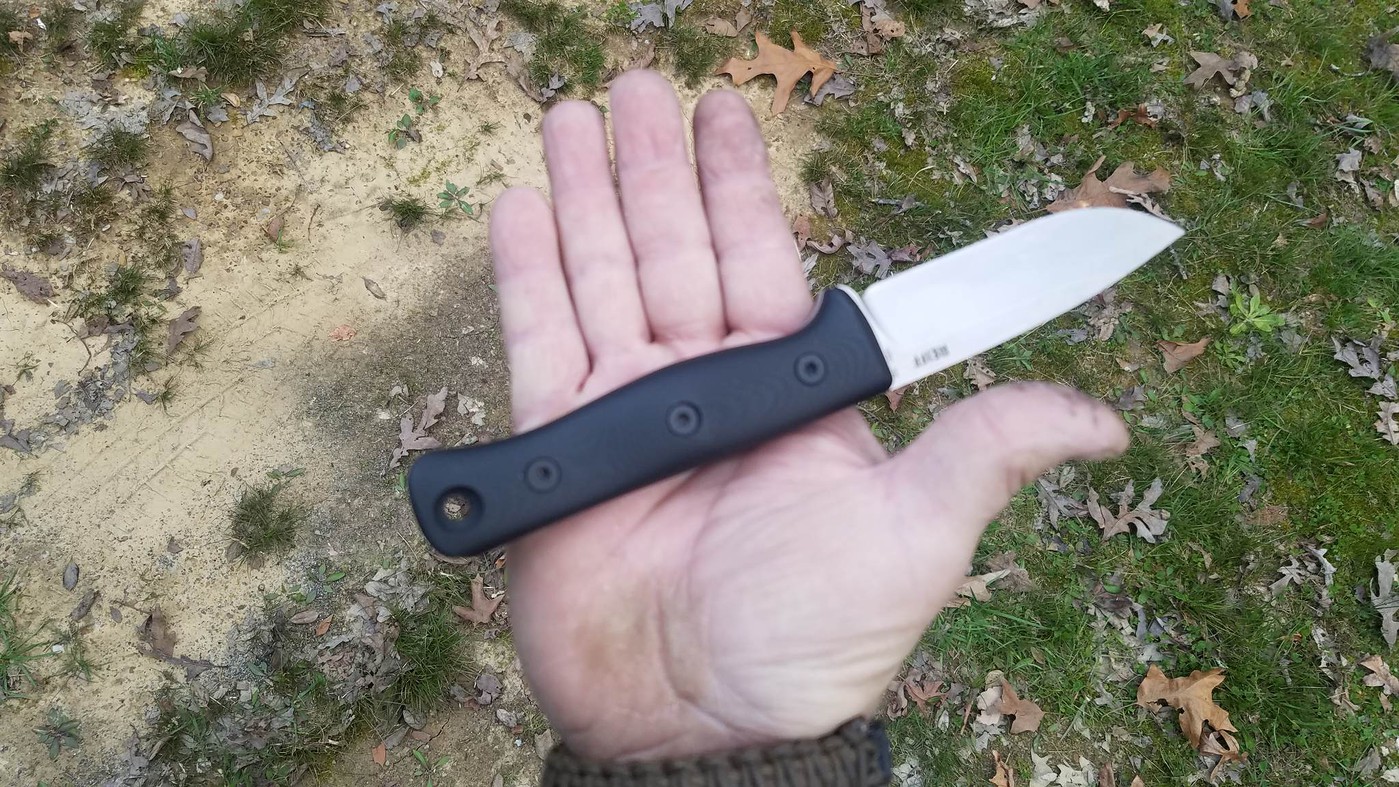
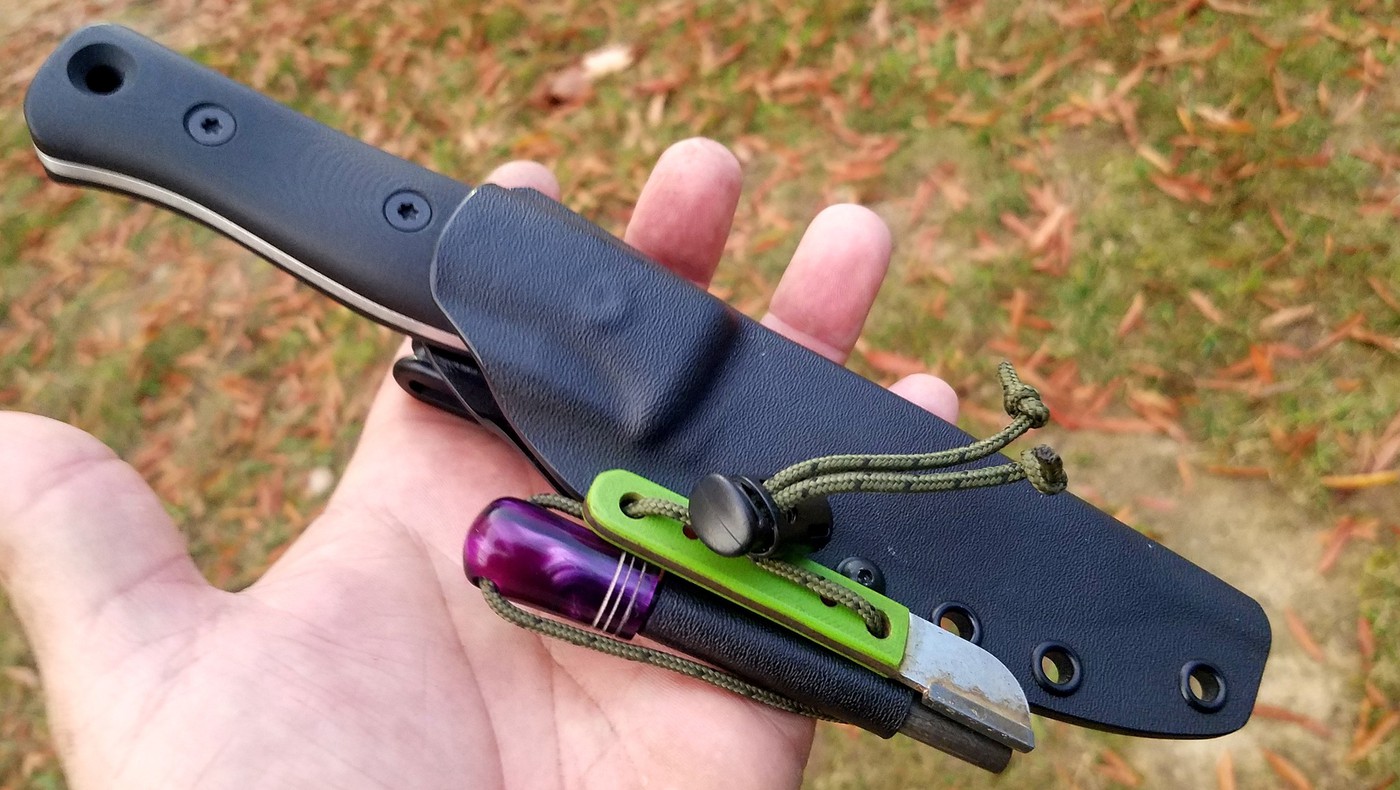
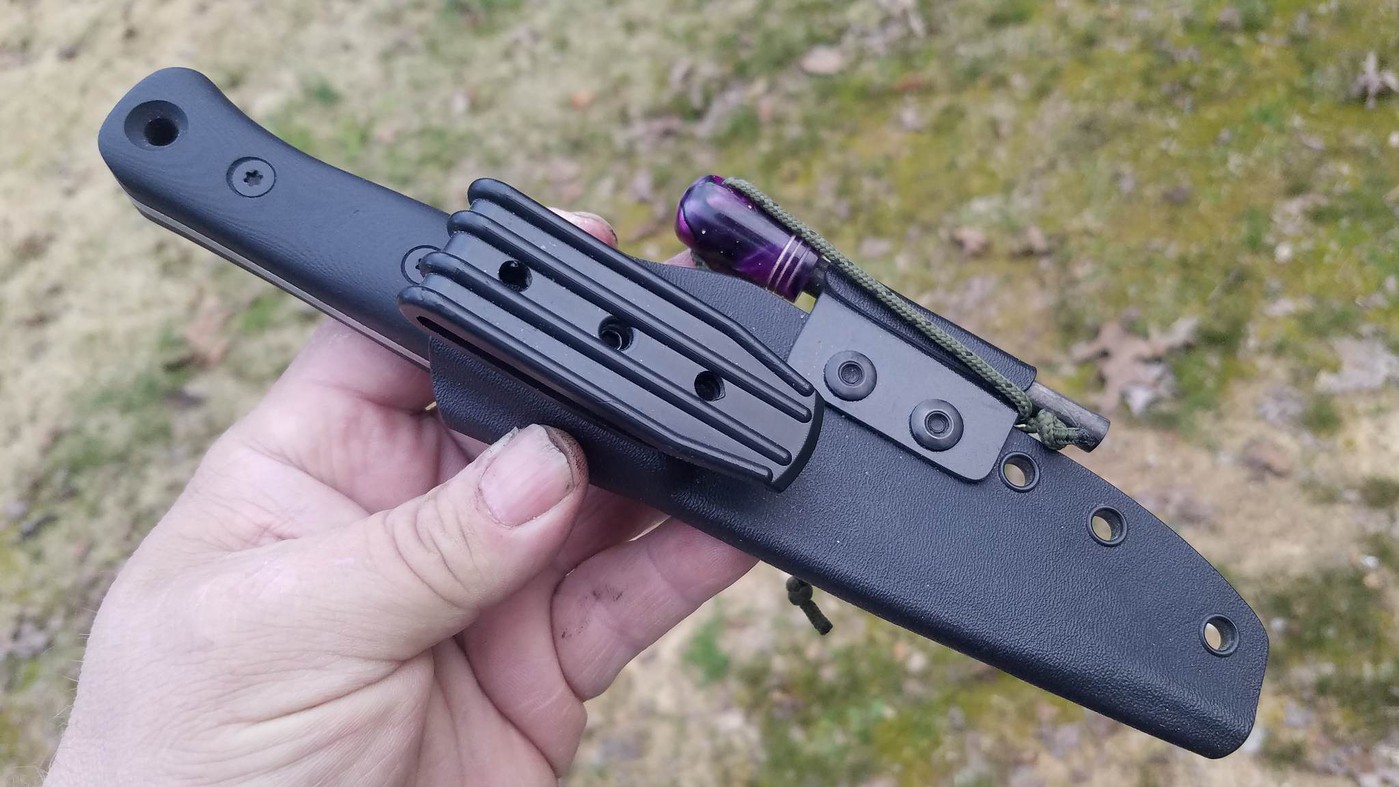
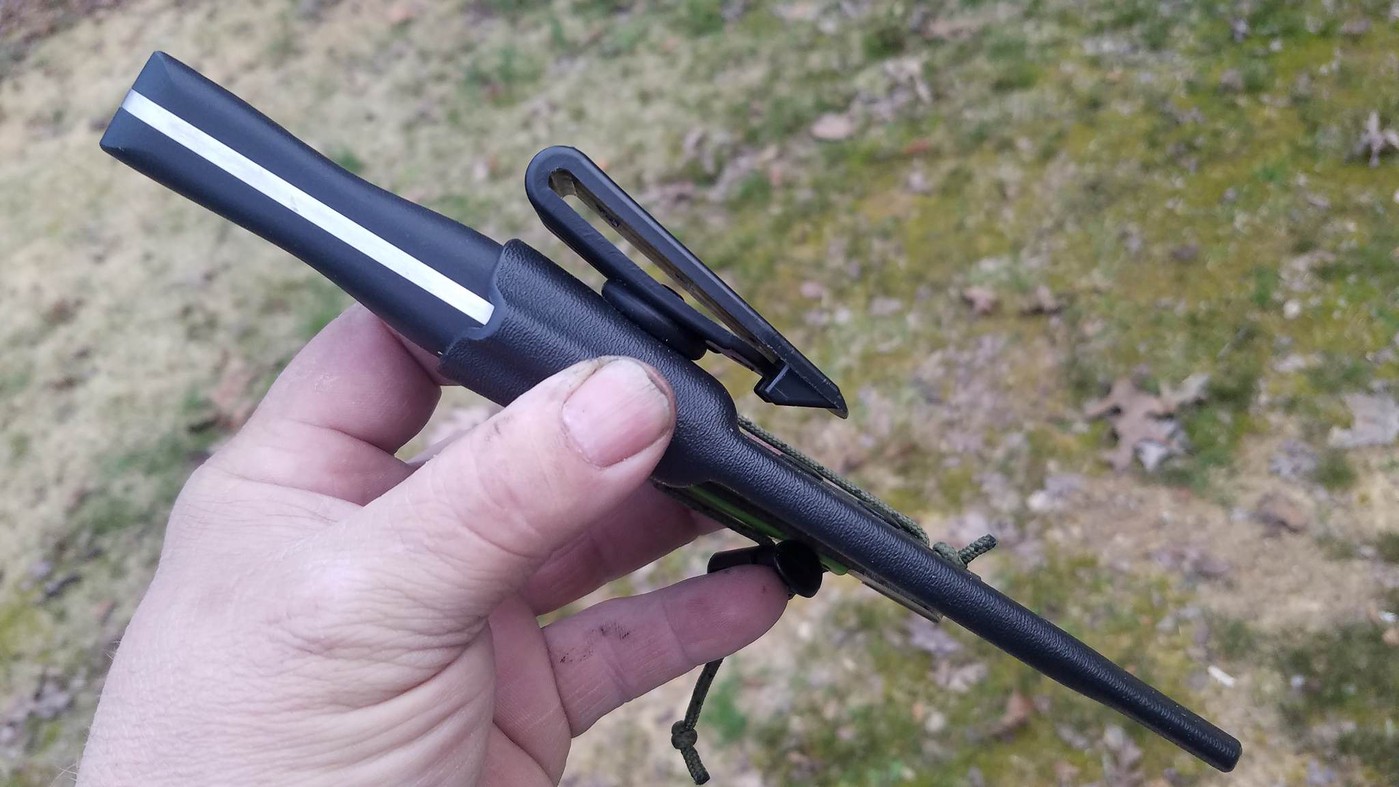
I have a presentation area at work where I do different skills presentations
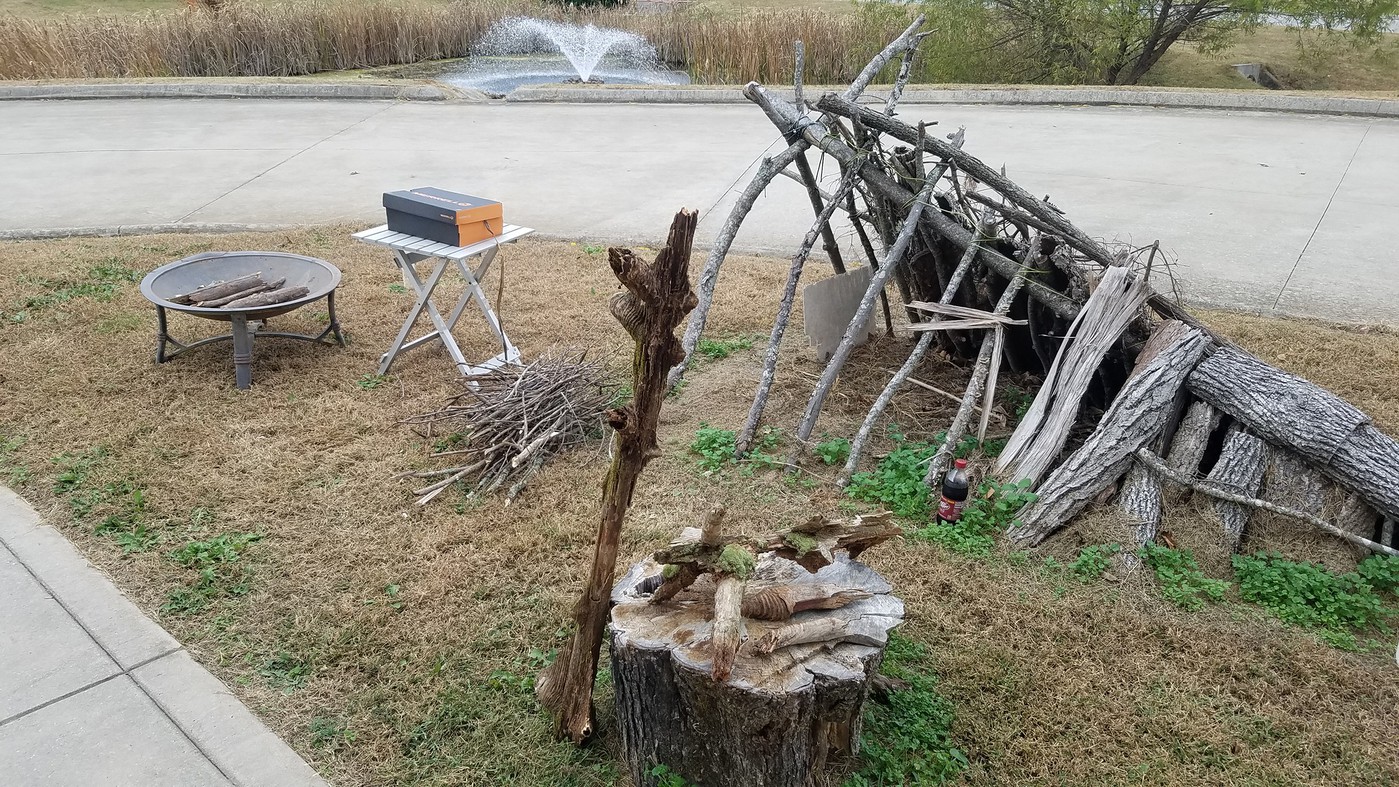
The first demo was on a dry day, so I did a version of a twp-stick heartboard made of Yucca stalks and feather sticks with a ferro rod. No pictures of it, but it cut the yucca stalks like they were hot butter as pretty much any sharp knife will. It handled nicely when making the feather sticks, it came with an extremely sharp edge.
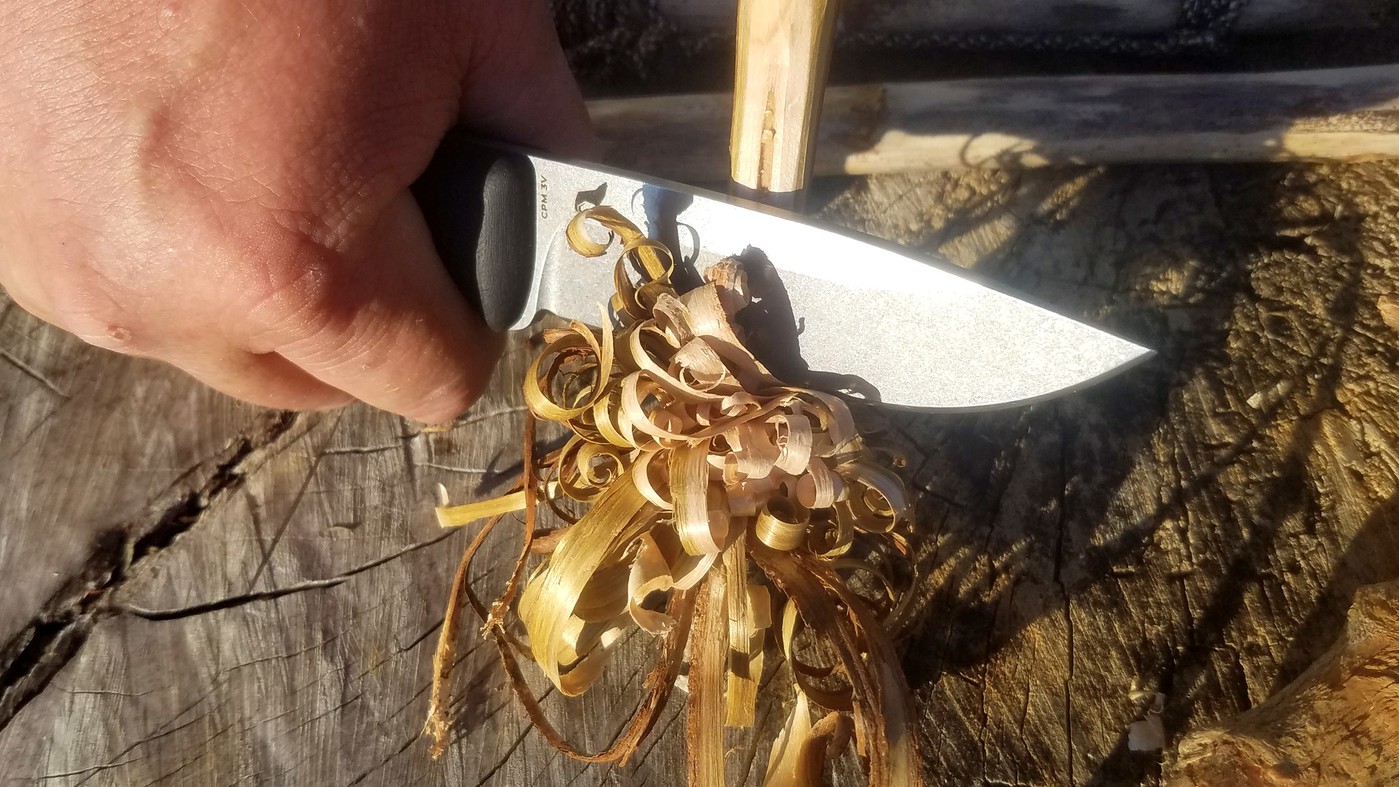
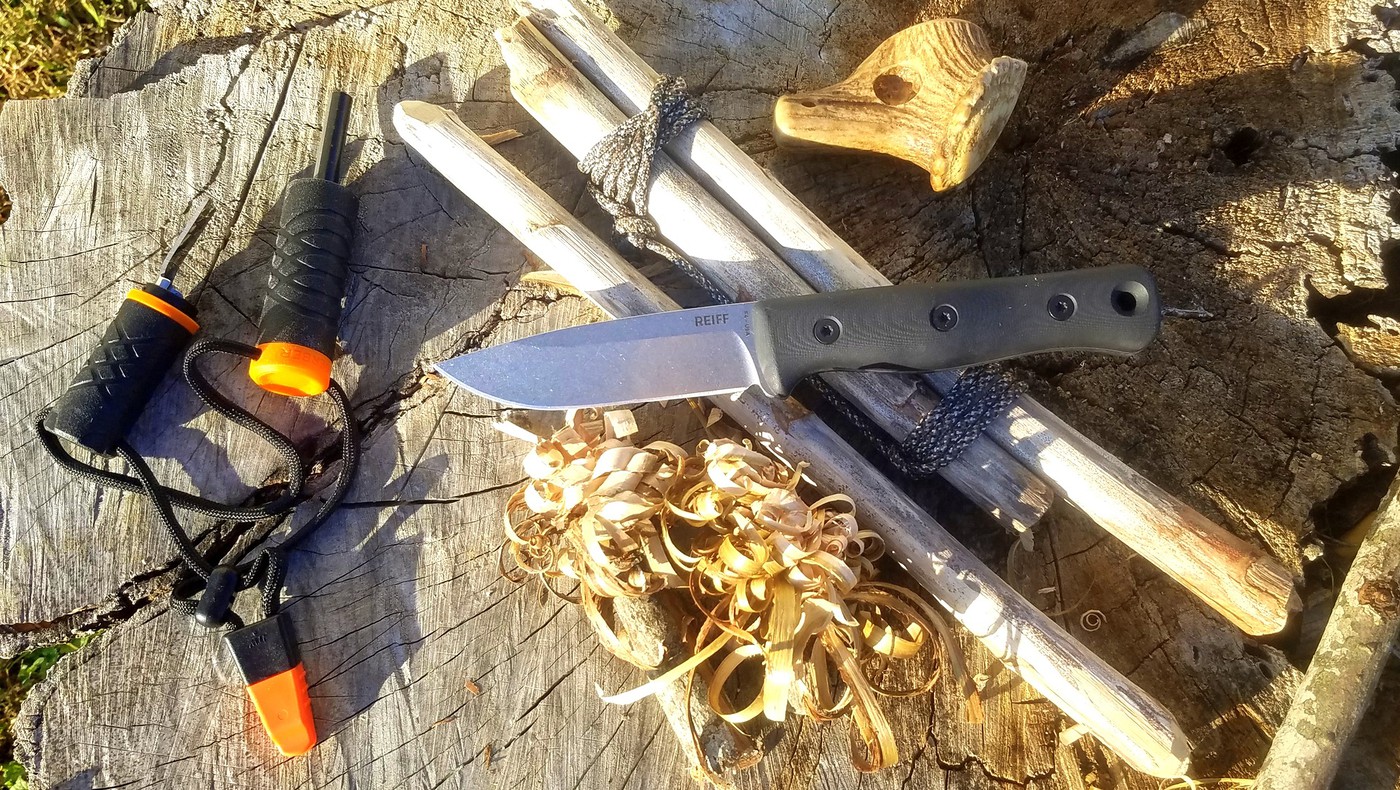
The next was on a day of off and on light rain, so I did a presentation on pine knots, why they work so well in the rain, how to distinguish between pine knots and one of their lookalikes here, Hemlock knots, that are not at all useful for firelighting in wet conditions
I showed them how they look and smell very different on the inside, even if sometimes they can look very similar on the outside. The F4 had no issues with being batonned through the pine knots. And handled really well when whitling pitchwood shavings as well.
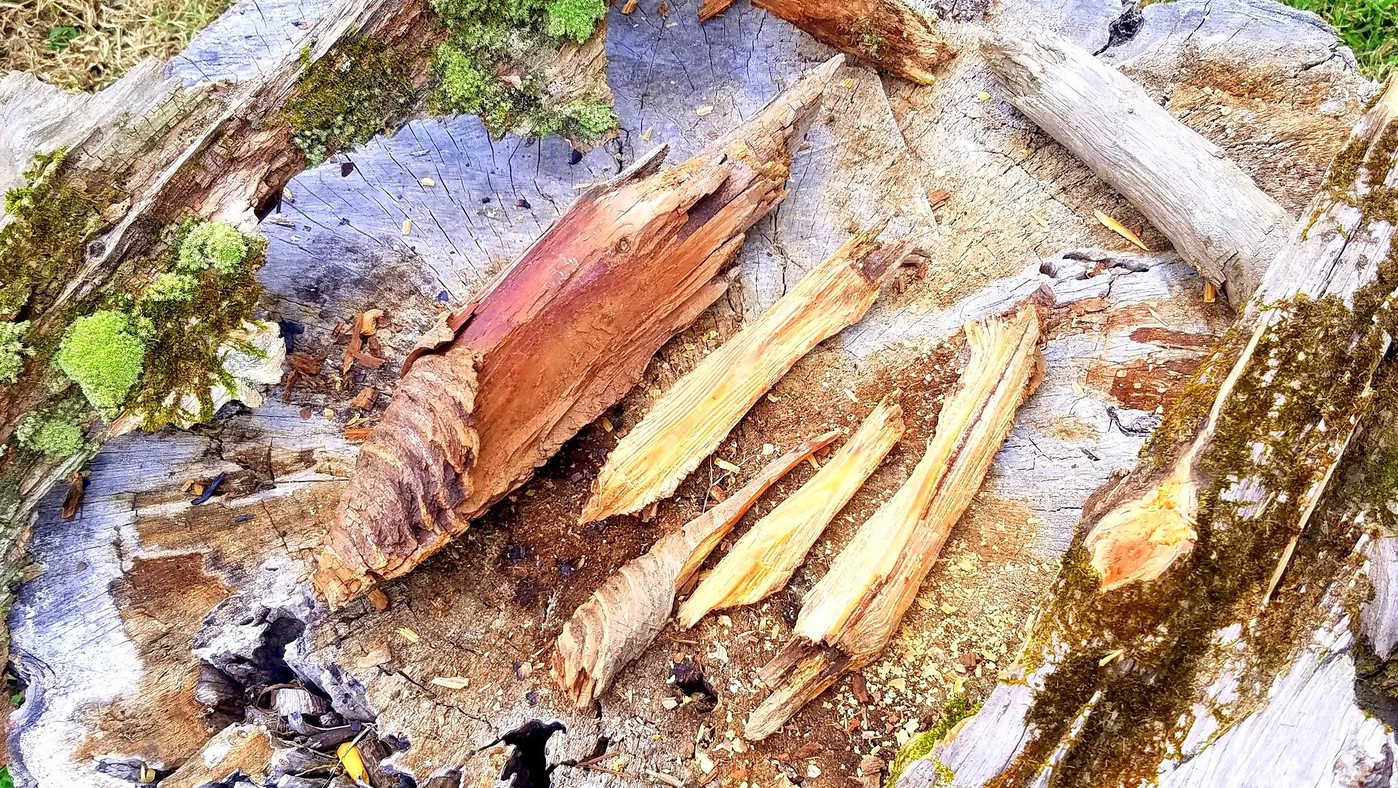
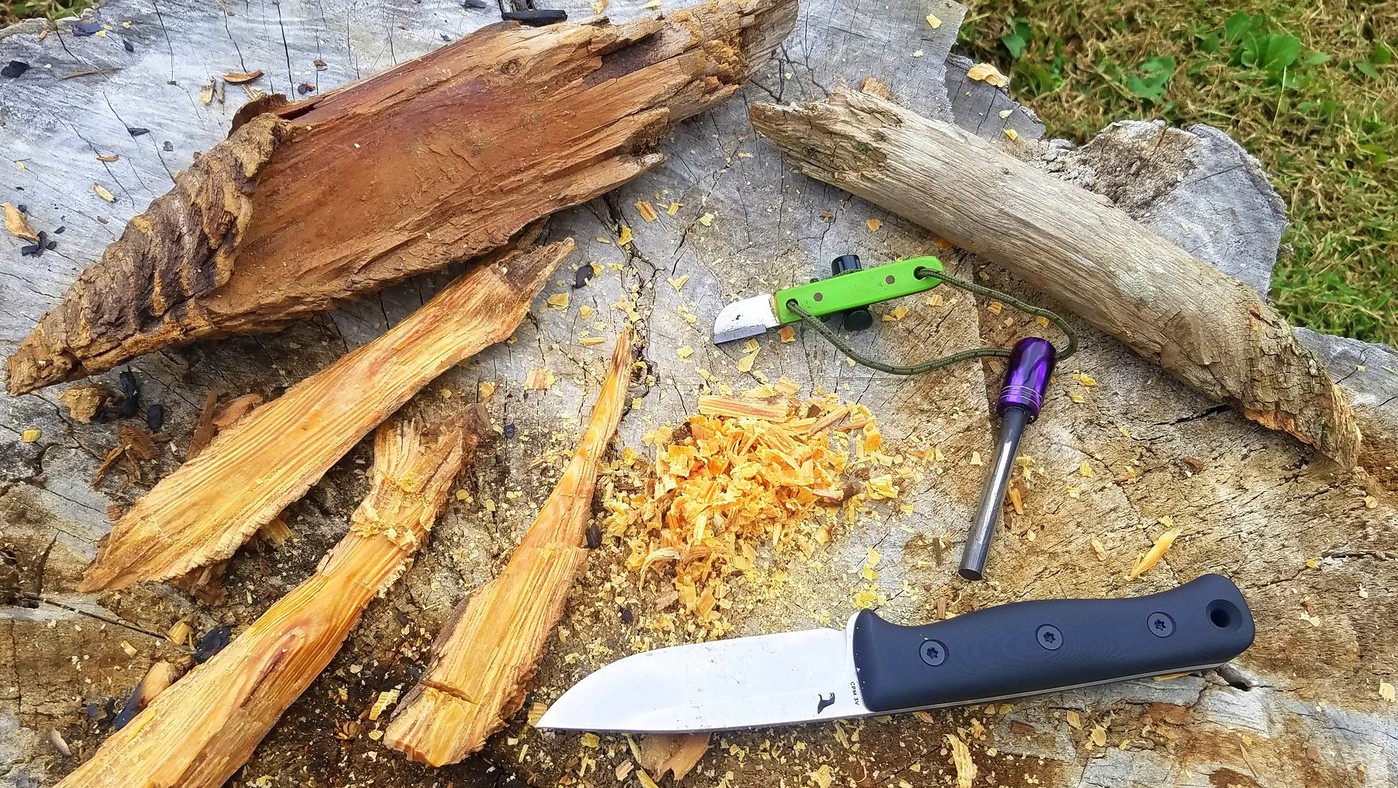
And I showed them how having a dedicated striker was not only a bit safer for striking a ferro rod when cold and having fatigued hands, it could also come in handy for sraping easily ignited pitchwood fuzz from the pine knots, preserving the knife's edge for other uses.
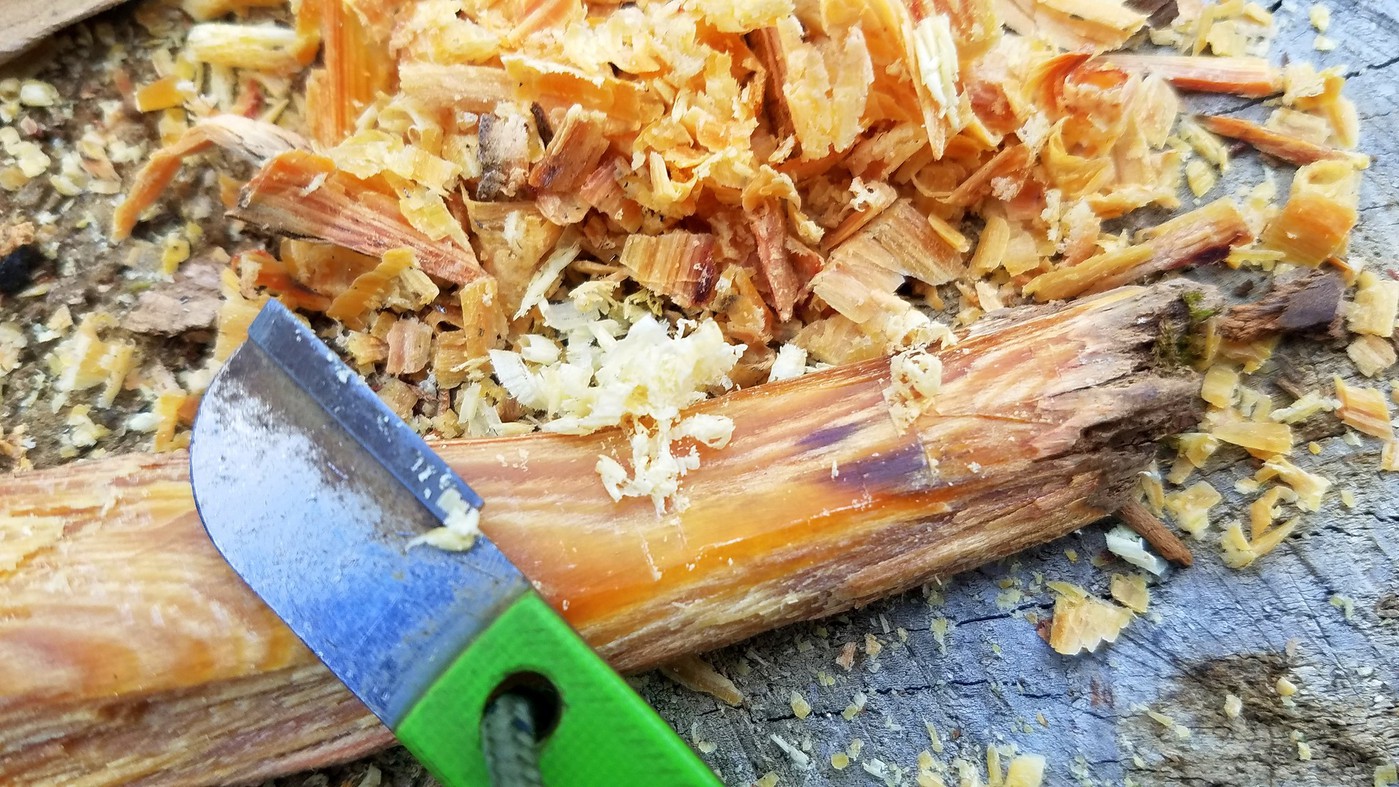
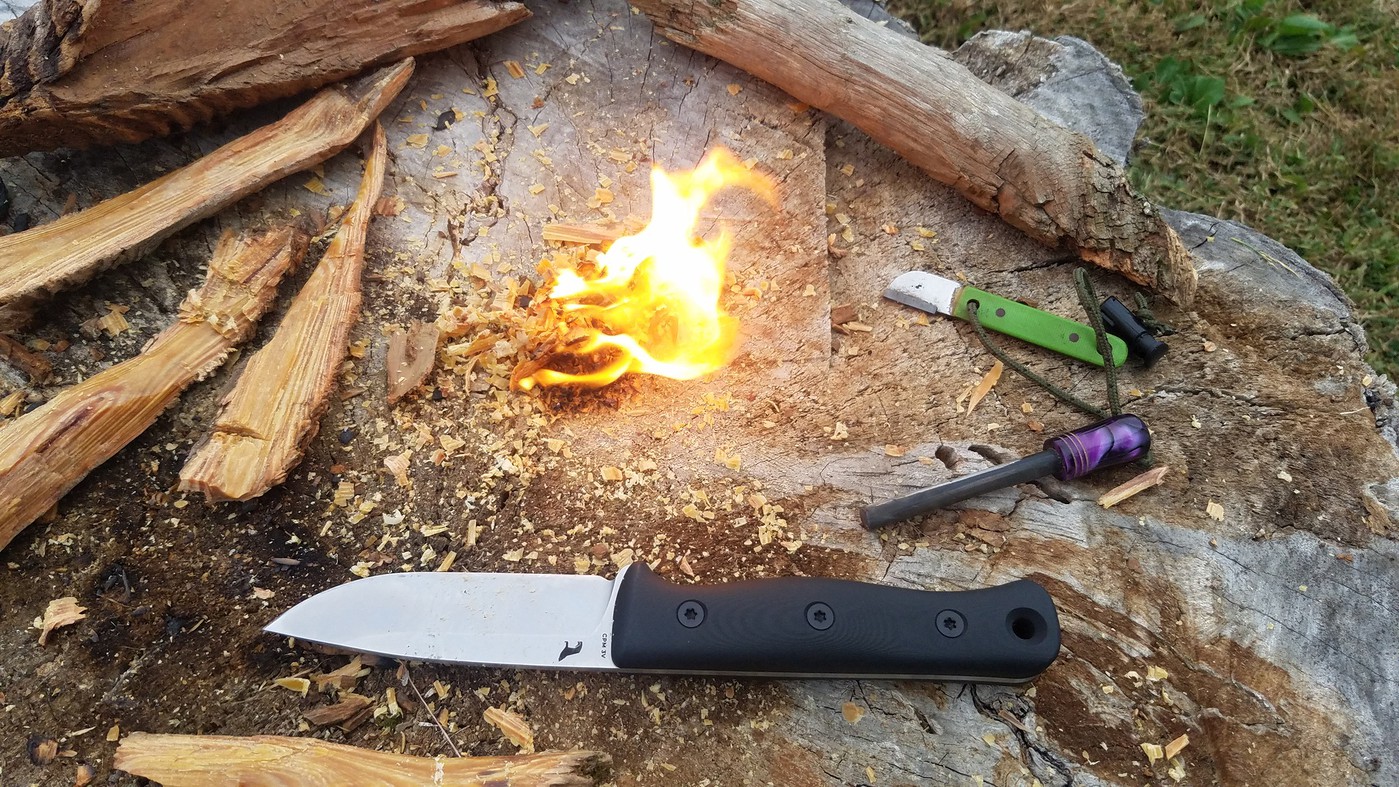
And then I showed them how effective pitchwood is at helping to achieving sustained fire here in our temperate rain forest, with them seeing all the steam from the moisture being cooked out of the damp wood by the heat of the hot-burning hydrophobic material.


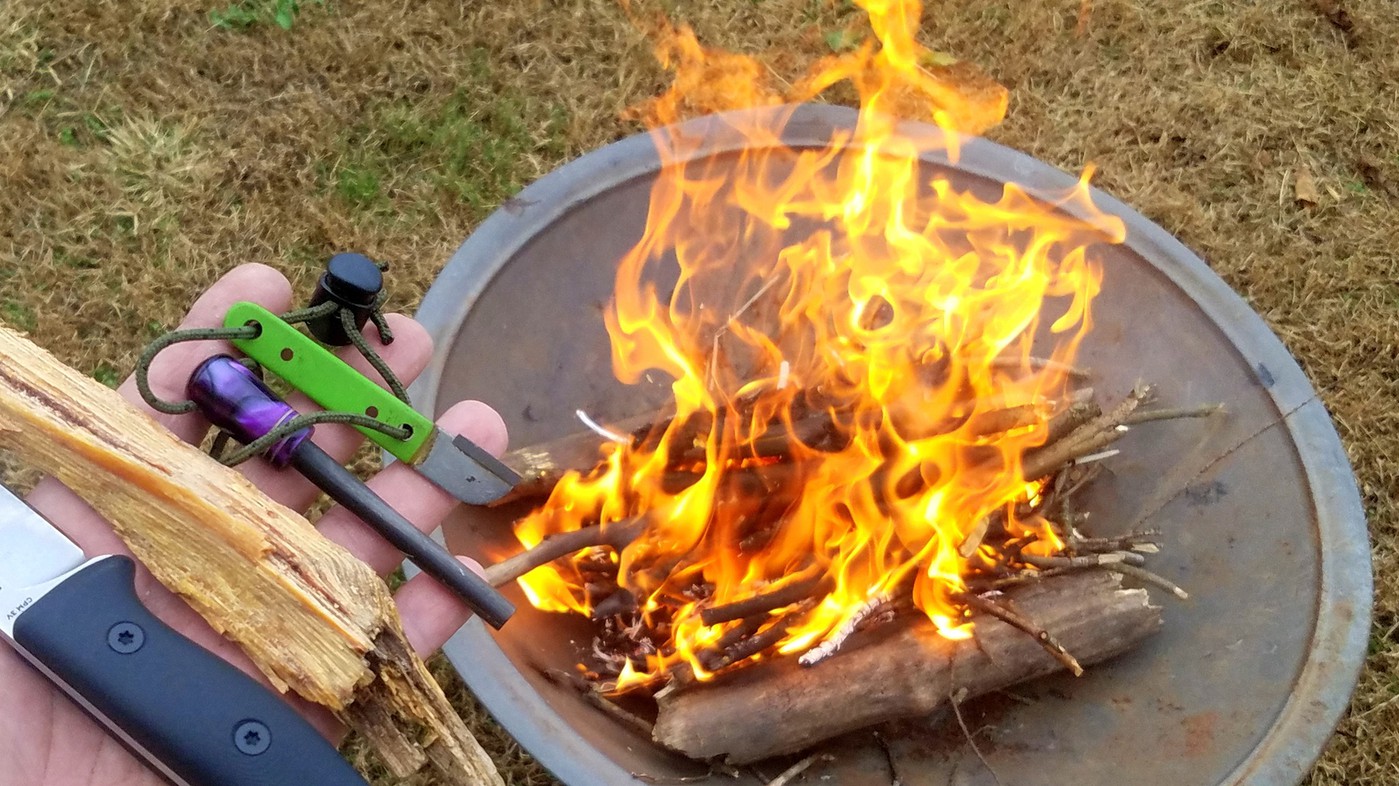
I've done a couple of other classes with the f4 I didn't photograph. and with what I have seen and felt out of it I am very well pleased with it as a fieldcraft / bushcraft knife. It's one of my favorite knife aquisitions so far, and that's saying something. I like it better that several handmade bushcraft knives I've paid more for.
Overall it is 9 inches, with a 4 inch blade made of 5/32 CPM 3V steel with a high saber grind, and has 3 dimensionally contoured G10 handle scales, and comes with a really solid kydex sheath.
It is the size knife I wanted for field craft demonstrations. I like the blade profile, grind geometry, thickness, and that the front side of the sharpening choil angles forward so it won't trap small cordage. I really like the handle size and ergonomics, and LOVE that the forward end of the handle scales wrap down around the forefinger and create a nice wide guard to push against rather than just using the thickness of the blade stock as a guard. I loath integral guards on working knives.
I also like how the sheath is set up somewhat like the Mora Companion sheath so that I can quickly and easily relocate the sheath from my belt to my pocket, or a cord around my neck to deal with changes in terrain types without having to partially undress in the field to do so. So far the clip is holding up well.
It had been so long since I had carried a sheath with a firesteel loop I think I have given most of those type ferro rods away to students and borrowed one of my daughter's ferro rods for the first demos, and ordered a new Exotac fireROD for it later.




I have a presentation area at work where I do different skills presentations

The first demo was on a dry day, so I did a version of a twp-stick heartboard made of Yucca stalks and feather sticks with a ferro rod. No pictures of it, but it cut the yucca stalks like they were hot butter as pretty much any sharp knife will. It handled nicely when making the feather sticks, it came with an extremely sharp edge.


The next was on a day of off and on light rain, so I did a presentation on pine knots, why they work so well in the rain, how to distinguish between pine knots and one of their lookalikes here, Hemlock knots, that are not at all useful for firelighting in wet conditions
I showed them how they look and smell very different on the inside, even if sometimes they can look very similar on the outside. The F4 had no issues with being batonned through the pine knots. And handled really well when whitling pitchwood shavings as well.


And I showed them how having a dedicated striker was not only a bit safer for striking a ferro rod when cold and having fatigued hands, it could also come in handy for sraping easily ignited pitchwood fuzz from the pine knots, preserving the knife's edge for other uses.


And then I showed them how effective pitchwood is at helping to achieving sustained fire here in our temperate rain forest, with them seeing all the steam from the moisture being cooked out of the damp wood by the heat of the hot-burning hydrophobic material.



I've done a couple of other classes with the f4 I didn't photograph. and with what I have seen and felt out of it I am very well pleased with it as a fieldcraft / bushcraft knife. It's one of my favorite knife aquisitions so far, and that's saying something. I like it better that several handmade bushcraft knives I've paid more for.
Last edited:
